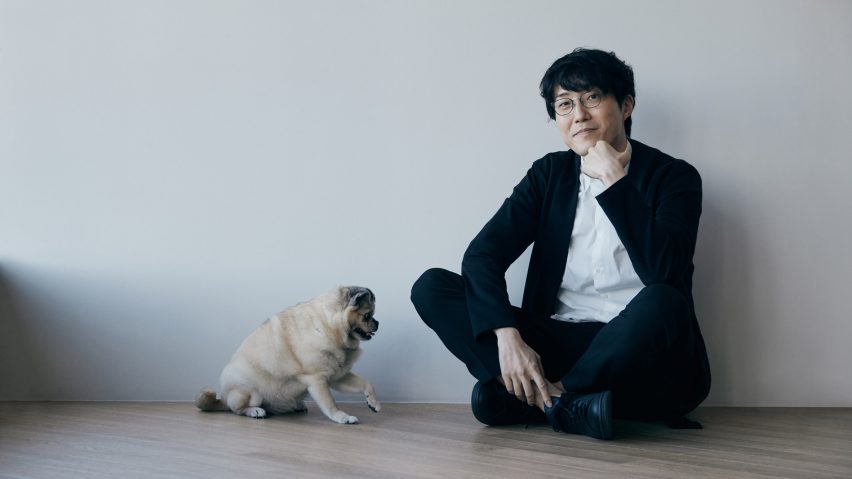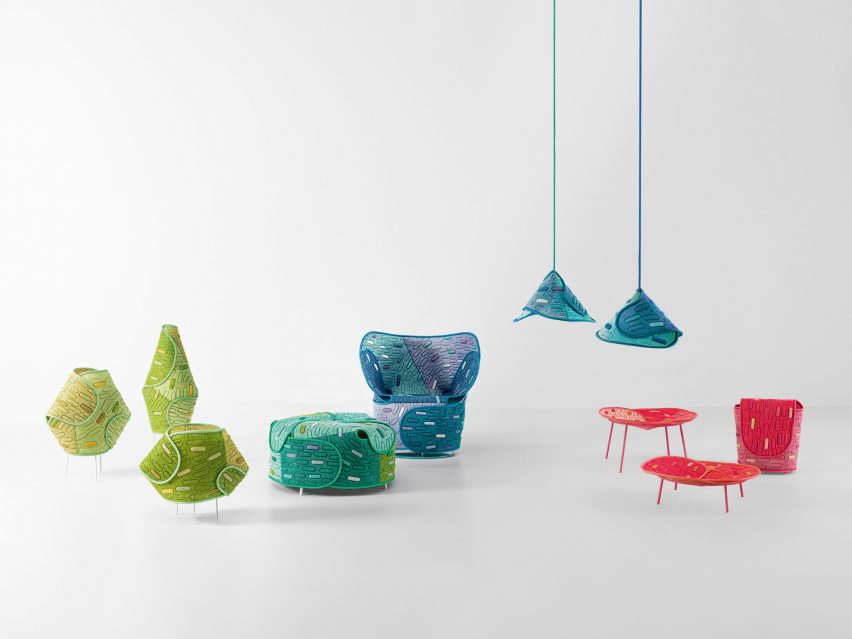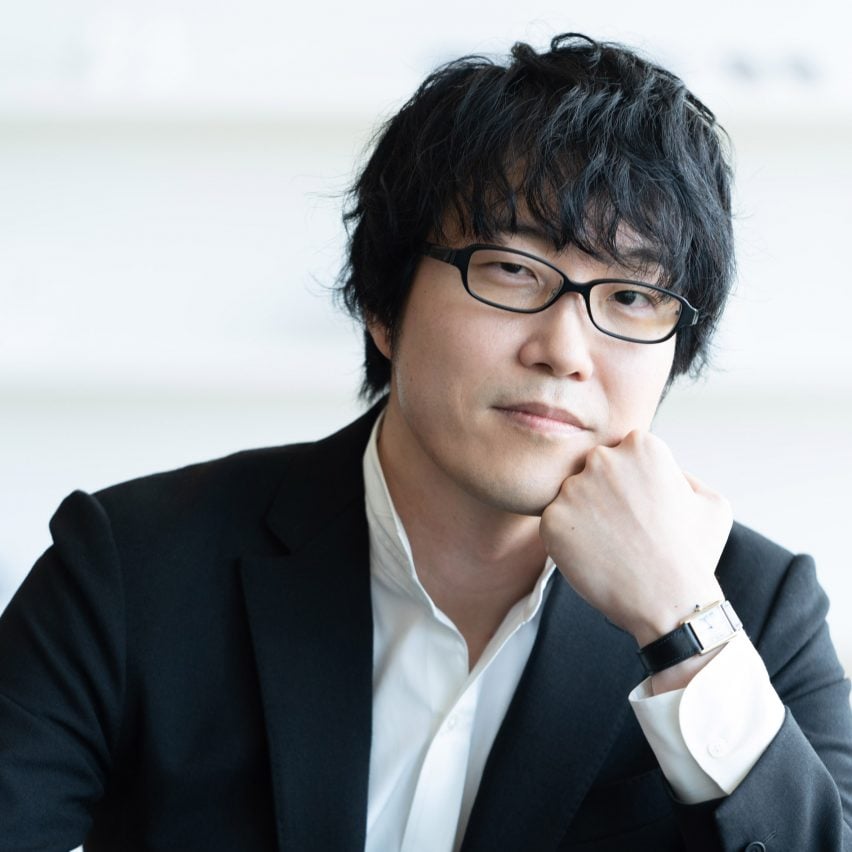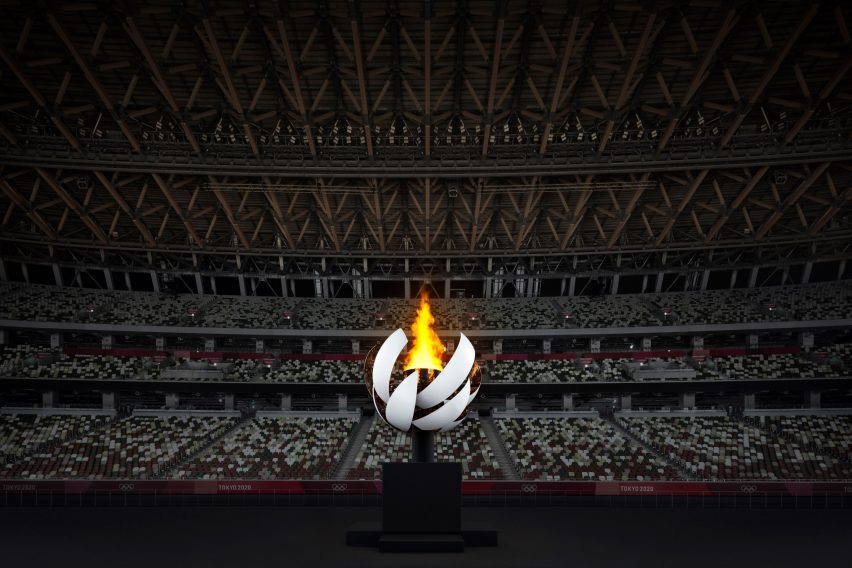
Design no longer "just about coming up with ideas and making stuff" says Oki Sato
The pressures of sustainability are making it harder to be a young designer starting out in the industry, Nendo founder Oki Sato tells Dezeen in this interview.
Speaking to Dezeen at the Milan design week launch of his Hana-arashi collection for Italian brand Paola Lenti, Sato noted that it was just over 20 years since he first showed his work in Milan.
The designer, who founded architecture and design studio Nendo in 2002, showed as part of Salone Satellite – the showcase for young designers at Milan furniture fair Salone del Mobile – in 2003.
"It's very tough for a young designer"
Sato believes he would find it harder to start out in the industry today, as there are more demands placed on designers to focus on sustainable design.
"Year after year I think the responsibility of the designers is getting very tense – it's huge, and I feel that it would be really difficult for me to start as a young designer in this period because design is not just about coming up with interesting ideas and making stuff," Sato told Dezeen.
"You have to think about materials and the process – is it not just human-centred, but for the planet, and we have to think about how it will be recycled in the future as well," he added.
"It's very tough for a young designer or a small atelier or workshop to think about all of these issues."

While starting out in a career in design is getting harder, Sato believes the sustainability challenges mean we need more designers to tackle them.
"It is much harder than when I started out, but this is something that we all need to solve together and we need to enjoy this process as well," he said.
"What is most important is that it's not just about reusing things, like making a new table using waste materials; it has to have a second life," he added.
"I think we need more designers in the world now because there are more problems that we need to solve, and we need to collaborate."
"If Nendo can do it, we can do it"
Sato also believes that Nendo's work has influenced young Japanese designers to show in Milan.
"When I was exhibiting, there were only two or three Japanese designers [in Milan], and it was kind of rare for Japanese designers to come in and exhibit," he said.
"[Now] I think a lot of young Japanese designers see it as 'if Nendo can do it, we can do it'."
As well as launching new products, Nendo is currently working on a number of large projects, including the Japan Pavilion for the Expo 2025 Osaka.
Sato is the general producer and designer for the pavilion, which will have an architectural design by Japanese studio Nikken Sekkei.

"Because it's the hosting country's pavilion, it's the biggest – it's 10,000 square metres and we have to work on the architecture and curate the interiors," he said.
"It's almost like 15 Salone del Mobiles at once, so it's kind of a nightmare," he joked.
The pavilion, which will be made from cross-laminated timber (CLT), will function as a waste disposal plant and a recycling space for the expo itself.
"We're trying to make it into a waste disposal plant; we're trying to collect waste from the other pavilions every day, then we are going to use that as energy, so we produce heat, electricity and water," Sato said.
"People can enjoy that process as well; we enter [the pavilion] together with the waste, and then it becomes water, and then we create plans and 3D-print objects."
The "very conceptual" pavilion will also showcase the history of Japan and present new technologies. It will have three entrances, with the primary entrance changing throughout the day to provide visitors with different experiences.
"It's a huge thing and we're expecting a few million people to visit during the six months," Sato said. "It's an entire experience that we're trying to design. And I think that is what I was trying to do from day one as Nendo, which was about being very flexible."
"Nendo, meaning playdough, is trying to blend together not only architecture, but the interiors and the small objects that are inside. I would say it is a 'Nendo' kind of pavilion that we're looking for."
The studio is also creating interiors for France's TGV trains, a project that Nendo has been working on for "seven years or so", according to Sato.

"We are working on the delivery of the interiors and the bar carriage," he said. "They were supposed to start running for the Olympics in Paris, but because of Covid things happened – hopefully it will be the end of this year, or, I think, next year."
Sati said he's looking forward to relaxing next year, once Nendo's big projects have been delivered.
"For Nendo, the Olympic cauldron, the TGV and the Expo, was something that was a very big project for us," he said.
"It was not like designing fun stuff during the Salone – a lot of politics, a lot of things with the budget and the schedule, very complicated projects," he added.
"So after that happens next year, I'm finally going to get relaxed."
The main photograph is by Seiichi Saito.
Dezeen In Depth
If you enjoy reading Dezeen's interviews, opinions and features, subscribe to Dezeen In Depth. Sent on the last Friday of each month, this newsletter provides a single place to read about the design and architecture stories behind the headlines.